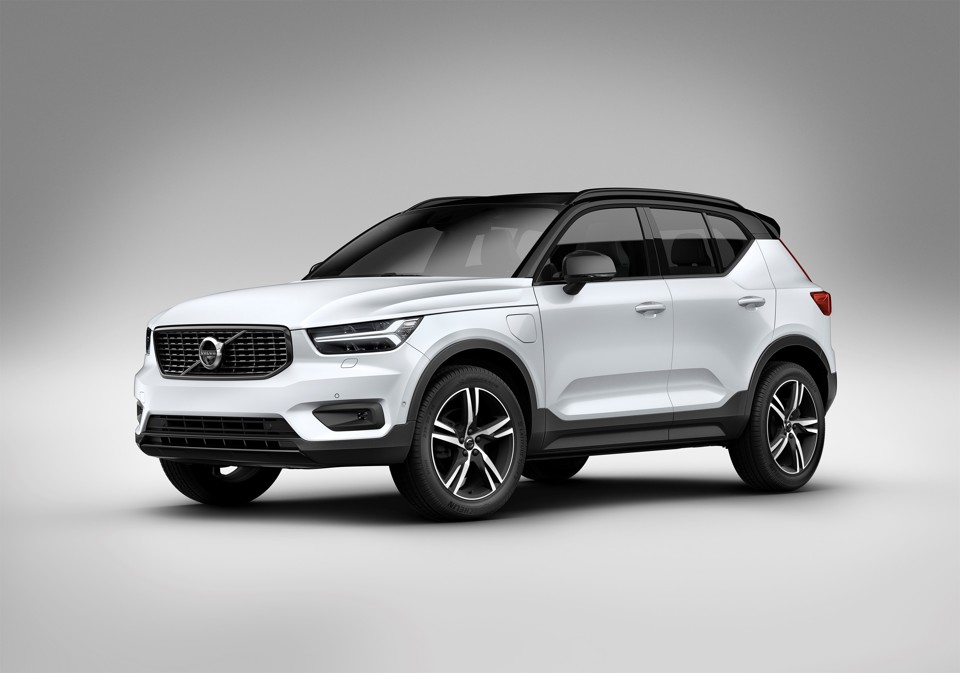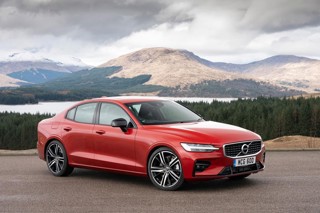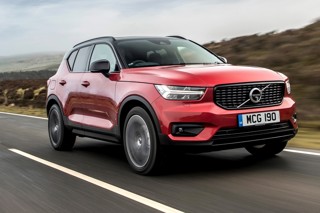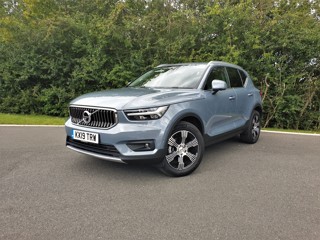Volvo’s new T5 Twin Engine petrol-electric hybrid powertrain has been unveiled in the XC40 ensuring it now offers plug-in hybrid versions across its entire model range.
The T5 Twin Engine marries Volvo’s new 1.5-litre three-cylinder 180hp petrol engine with an 82hp electric motor in a hybrid system that delivers 262hp.
Preliminary WLTP figures for CO2 emissions are from 38g/km (where 19-inch wheels are specified), while combined cycle fuel consumption is expected to be up to 141.1mpg.
The compact, energy-dense lithium-ion battery has a capacity of 10.7kWh, enabling exhaust emissions-free electric-only driving of up to 28.6 miles (provisional data), according to driving conditions and battery charge levels.
The new T5 Twin Engine joins two diesel and three petrol powertrains in the XC40 range, with an all-electric model expected next year.
The T5 Twin Engine is not only the first hybrid powertrain in the XC40, it is also the first to be engineered for use in Volvo’s CMA (Compact Modular Architecture) platform. It is front-wheel drive, in contrast to the established T8 Twin Engine (390hp) powertrain deployed in larger models built on the SPA (Scalable Product Architecture) platform, which has all-wheel-drive capability.
The powertrain’s efficiency and performance are supported by a new seven-speed twin-clutch automatic transmission, featured for the first time in a new-generation Volvo model.
Volvo says that the emissions efficiency of the T5 Twin Engine delivers cost-of-ownership benefits, including a benefit-in-kind tax rate for company car drivers of 16%.
For a 40% taxpayer, this means a monthly tax bill starting from £218 in the current financial year, a base figure that will fall to £163 in the 2020/2021 tax year – adding up to a saving of £660 per year.
The T5 Twin Engine is also exempt from annual Vehicle Excise Duty (road tax).
Kristian Elvefors, Volvo Car UK’s Managing Director, said: “The introduction of the T5 Twin Engine brings our electrification programme to the heart of our model line-up, demonstrating our commitment to giving all our customers the best possible choice when it comes to powertrains that are both better for the environment and also practical for their lifestyles and driving requirements.
“The XC40 T5 Twin Engine is the first plug-in hybrid car in the premium compact SUV segment, and its technology brings real day-to-day cost benefits in terms of tax and fuel consumption.”
XC40 T5 Twin Engine models come with a recharging outlet on the nearside front wing. A 4.5m cable with a three-pin plug is provided as standard, while a type 2/mode 3 fast-charge cable is available as an optional extra for £50.
Charging via the fast-charge cable will completely recharge the car’s high-voltage battery in as little as 2.5 hours. Fully charging via the three-pin plug cable takes between 3.5 and 6 hours.
The new powertrain is available in higher-specification versions of the XC40 – R-Design, R-Design Pro, Inscription and Inscription Pro trim levels.
On-the-road prices are from £40,905 for the R-Design. Volvo retailers are taking customer orders now, with the first cars scheduled for UK delivery in February 2020.
XC40 T5 Twin Engine technical specifications*
Transmission Seven-speed twin-clutch automatic, front-wheel drive
Engine configuration In-line, three cylinders
Engine capacity 1,477cc
Max. engine output 180hp/5,800rpm
Max. engine torque 265Nm/1,500-3,000rpm
Max. electric motor output 82hp
Max. electric motor torque 160Nm
Battery type Lithium-ion
Battery capacity 10.7kWh
Total system max. output 262hp
0-62mph acceleration 7.3 seconds
Top speed 127mph
WLTP CO2 emissions 38g/km (19-inch wheels); 41g/km (20-inch wheels); 43g/km (21-inch wheels)
WLTP fuel consumption 112.8-141.1mpg
WLTP all-electric range 26.1-28.6 miles
Range and prices
|
Model/grade |
On-the-road price |
|
XC40 T5 Twin Engine R-Design |
£40,905 |
|
XC40 T5 Twin Engine R-Design Pro |
£42,305 |
|
XC40 T5 Twin Engine Inscription |
£41,255 |
|
XC40 T5 Twin Engine Inscription Pro |
£42,305 |
* All technical data is preliminary
























The Engineer - 11/09/2019 12:49
How much boot space is left is the big question